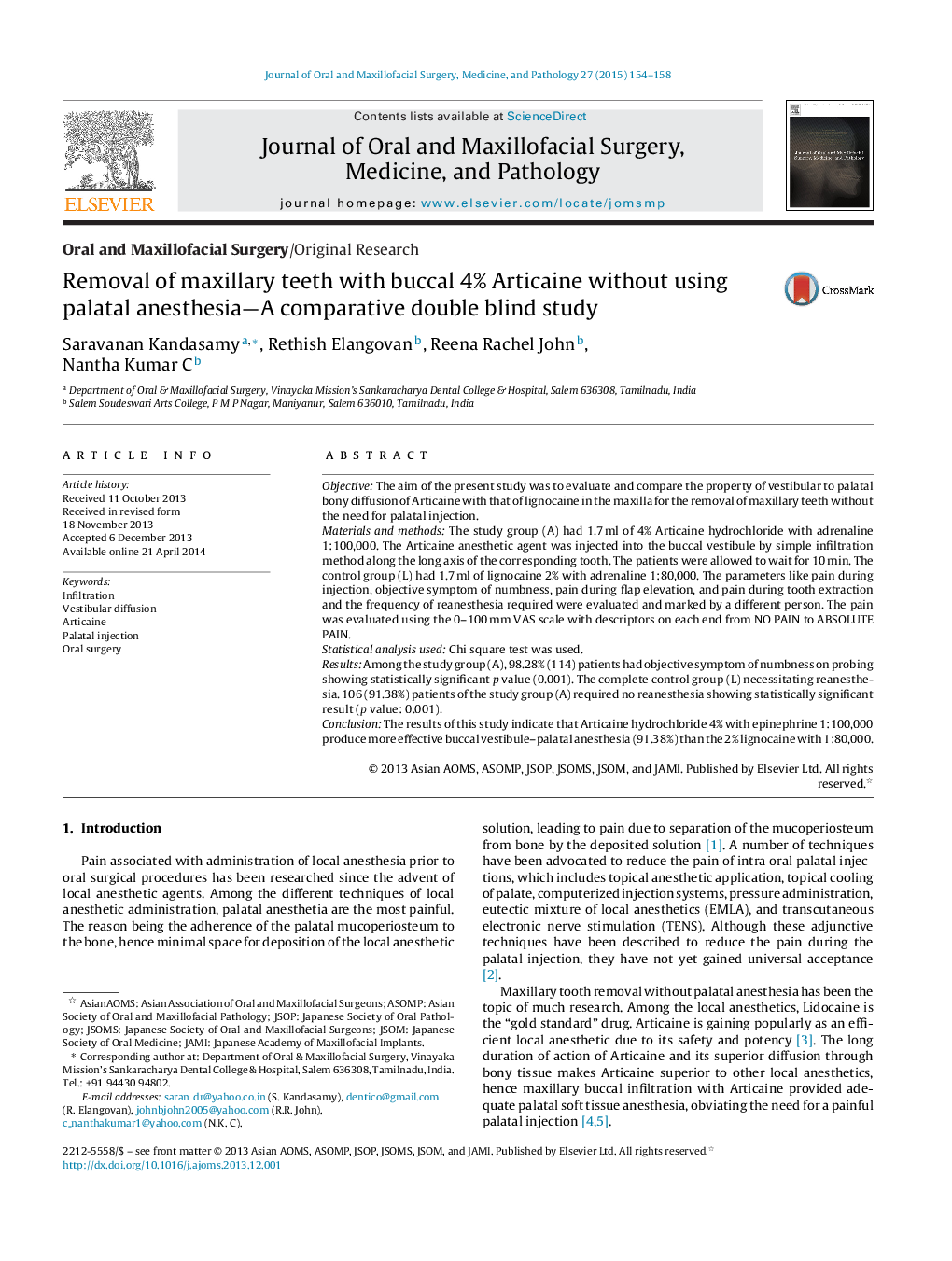| Article ID | Journal | Published Year | Pages | File Type |
|---|---|---|---|---|
| 3160514 | Journal of Oral and Maxillofacial Surgery, Medicine, and Pathology | 2015 | 5 Pages |
ObjectiveThe aim of the present study was to evaluate and compare the property of vestibular to palatal bony diffusion of Articaine with that of lignocaine in the maxilla for the removal of maxillary teeth without the need for palatal injection.Materials and methodsThe study group (A) had 1.7 ml of 4% Articaine hydrochloride with adrenaline 1:100,000. The Articaine anesthetic agent was injected into the buccal vestibule by simple infiltration method along the long axis of the corresponding tooth. The patients were allowed to wait for 10 min. The control group (L) had 1.7 ml of lignocaine 2% with adrenaline 1:80,000. The parameters like pain during injection, objective symptom of numbness, pain during flap elevation, and pain during tooth extraction and the frequency of reanesthesia required were evaluated and marked by a different person. The pain was evaluated using the 0–100 mm VAS scale with descriptors on each end from NO PAIN to ABSOLUTE PAIN.Statistical analysis usedChi square test was used.ResultsAmong the study group (A), 98.28% (114) patients had objective symptom of numbness on probing showing statistically significant p value (0.001). The complete control group (L) necessitating reanesthesia. 106 (91.38%) patients of the study group (A) required no reanesthesia showing statistically significant result (p value: 0.001).ConclusionThe results of this study indicate that Articaine hydrochloride 4% with epinephrine 1:100,000 produce more effective buccal vestibule–palatal anesthesia (91.38%) than the 2% lignocaine with 1:80,000.
